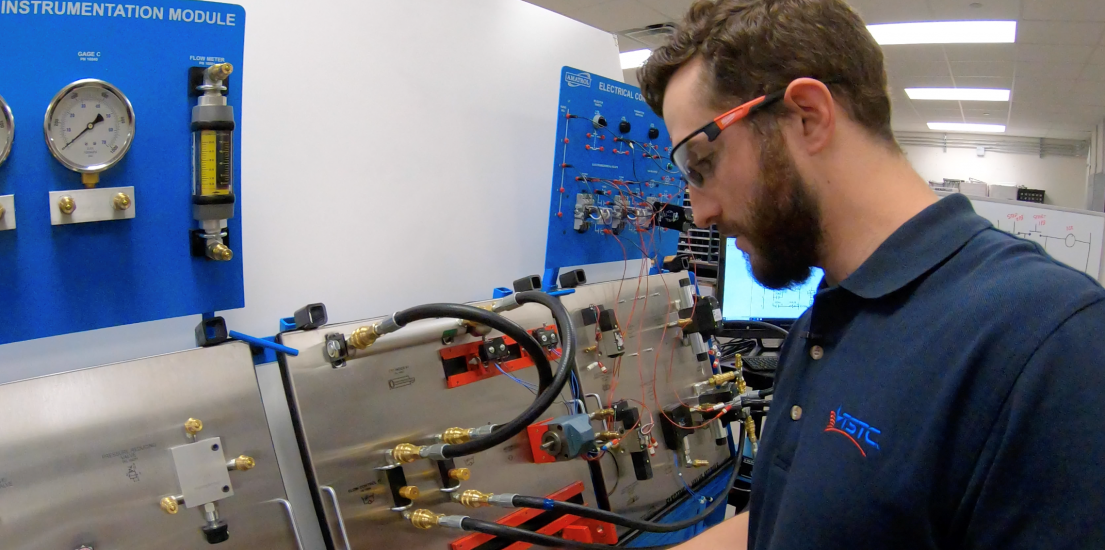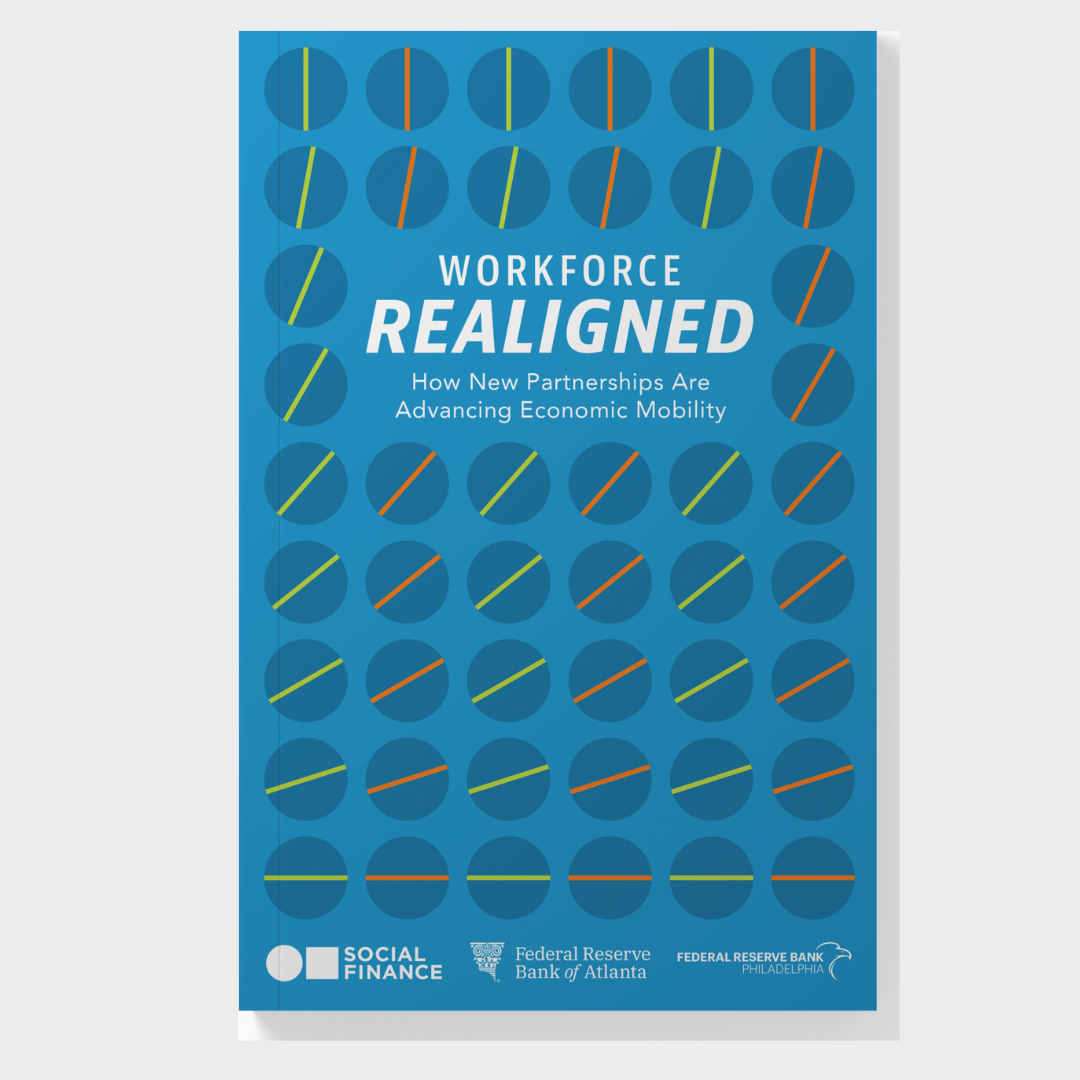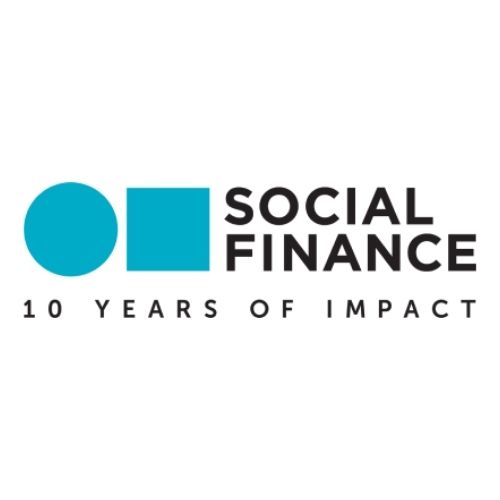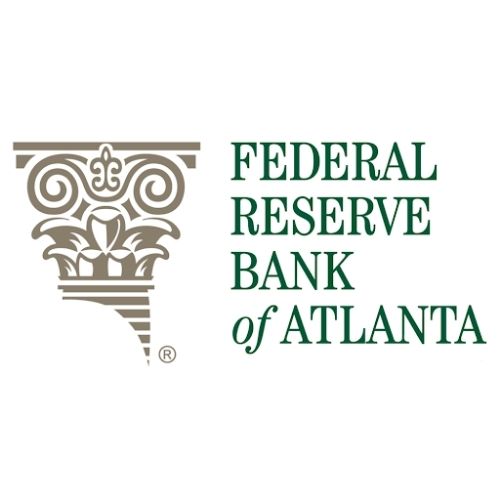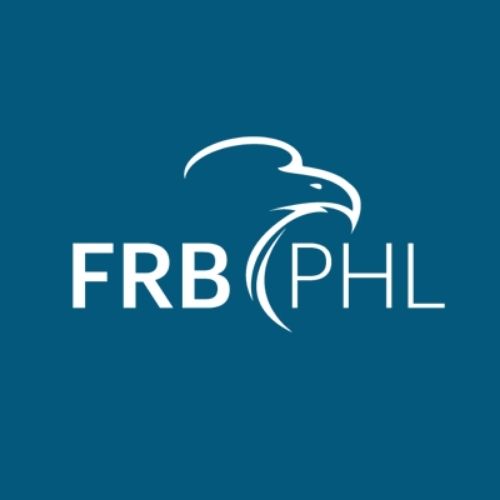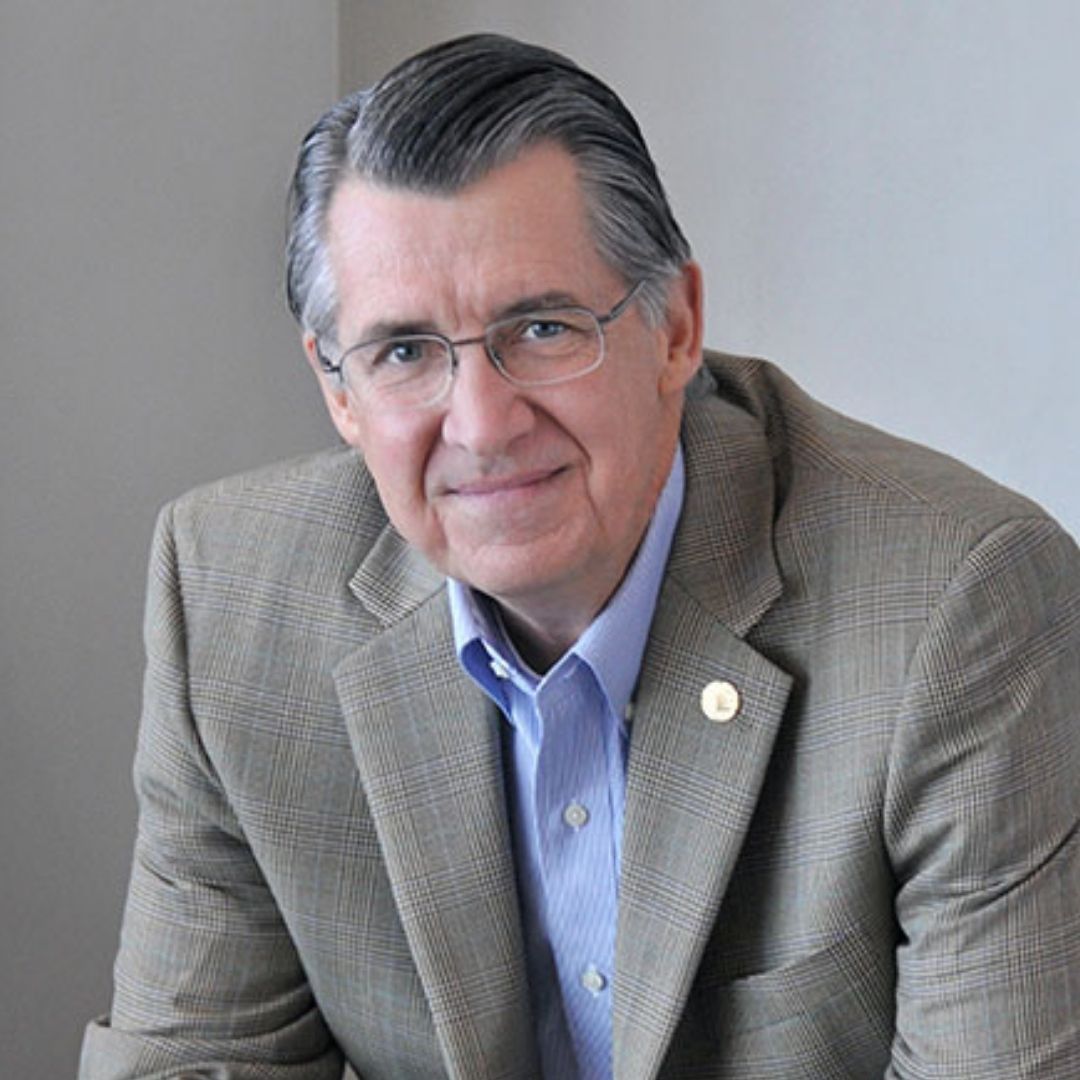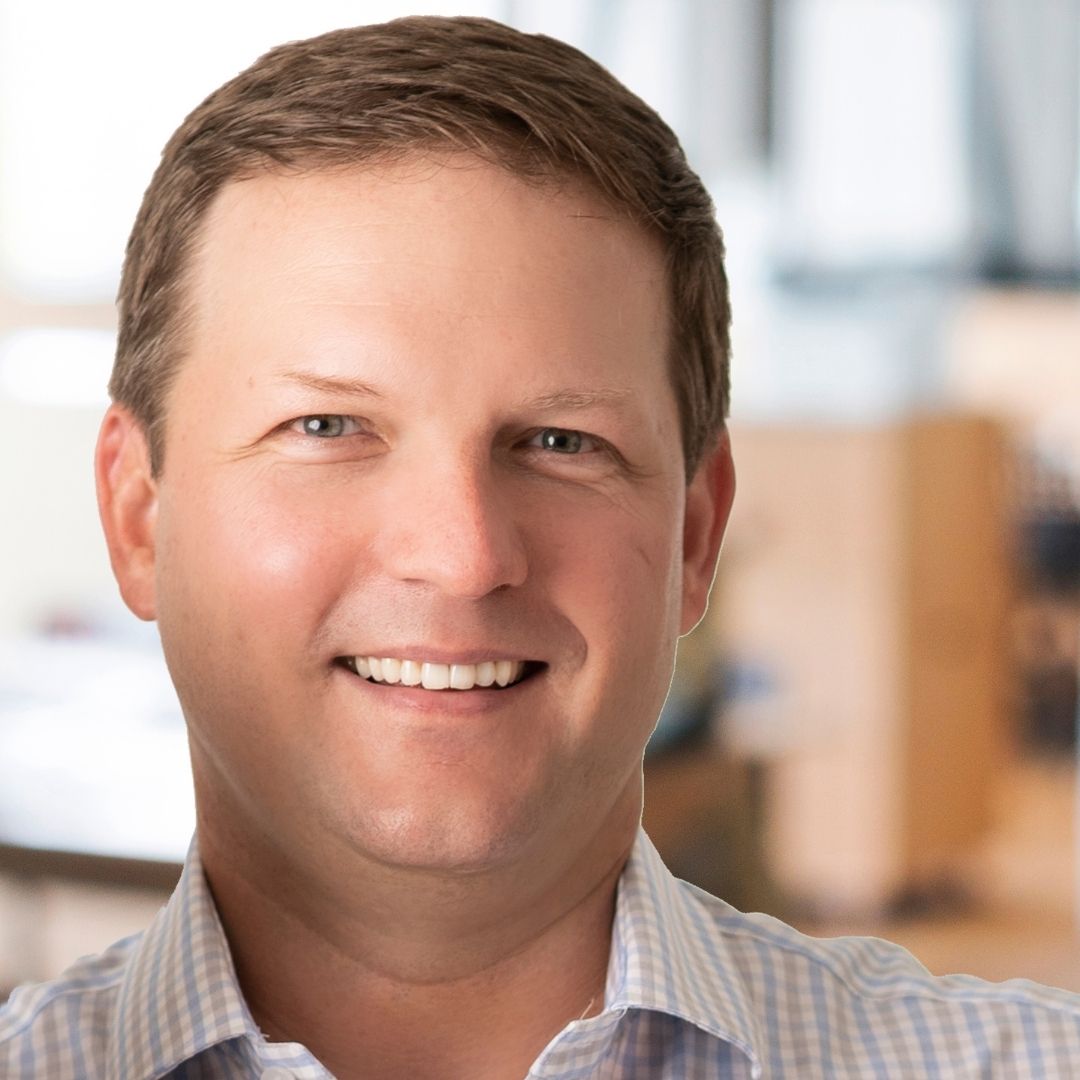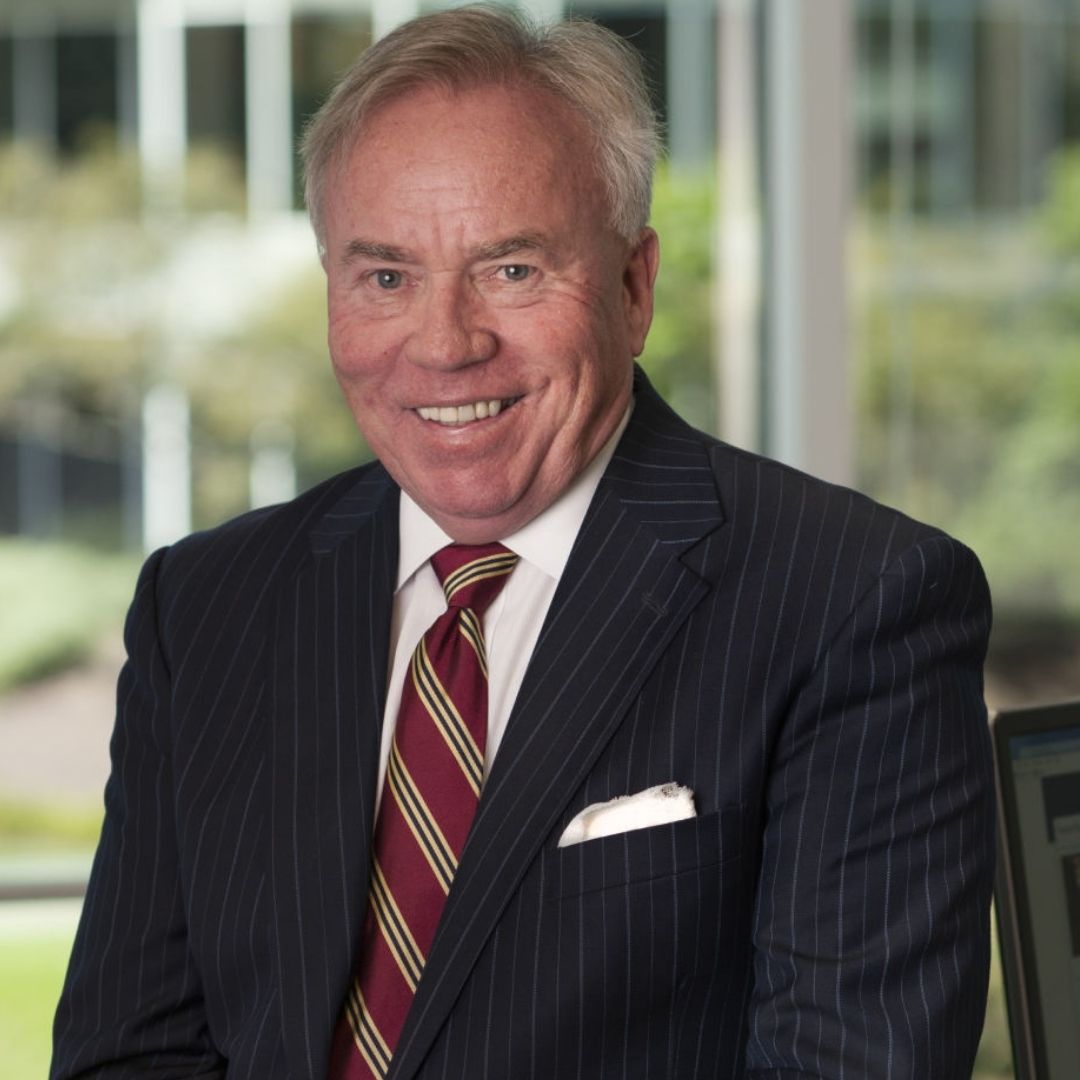You’ve heard the phrase, “We can’t do it alone.” As we examine ways in which people are being connected to workforce development programs that lead to good jobs and careers, we’re seeing that those words are taking on new importance, especially when it comes to funding that training.
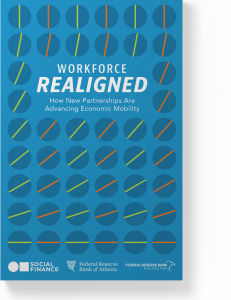
Workforce Realigned: How New Partnerships Are Advancing Economic Mobility—a new book from Social Finance, a nonprofit organization that mobilizes capital to drive social progress, along with the Federal Reserve Banks of Atlanta and Philadelphia—explores how cross-sector partnerships are shifting the way funding is structured in an effort to address changing workforce issues.
“We must create more aligned incentives for programs to ensure that those who are powering our economy are able to share in its growth. In doing so, we can lay the foundation for a more adaptive system ready to meet the continually changing future of work,” according to the book.
These partnerships are being created among various groups, including government agencies, education and training providers, corporate leaders, and investors. Social Finance CEO Tracy Palandjian tells WorkingNation, “The book is trying to shine a light on these extraordinary partnerships, these bright spots, if you will.”
“We have been developing (the book) with the Atlanta Fed and the Philly Fed for over two years now. We came together and said, ‘Let’s go hunt for these examples of workforce partnerships that are responding to the changing economy.’”
“There’s this new breed of partnerships that are basically rethinking how we look at risk,” she adds, “how we think about who pays, who benefits, and who bears the risk.”
The book offers a number of examples of funding partnerships that are putting job training opportunities within reach for more people across all sectors of society.
Going All In: Tying Funding to Outcomes
Among those adding to the conversation is Texas State Technical College (TSTC) in Waco. TSTC was ahead of its time in 2003 when it suggested to the state legislature that 100% of its funding be tied to its students’ employment outcomes.
“The reason for 100% is the second that you introduce another variable, you’ve diluted the cultural change, the power of the cultural change that this funding model brings to this discussion,” says Michael Bettersworth, TSTC’s chief innovation officer. “What we were really trying to do was to align the entire institution around placement.”
Bettersworth says employer engagement is crucial to ensure the programs and their curricula are focused on employers’ needs. “We have 35 instructional designers—a quality team—that’s sole job is to focus on competency development, alignment, and validation with industry.”
Bettersworth notes the technical college has even created its own software application called SkillsEngine to help educators validate employers’ skill requirements and adjust coursework accordingly.
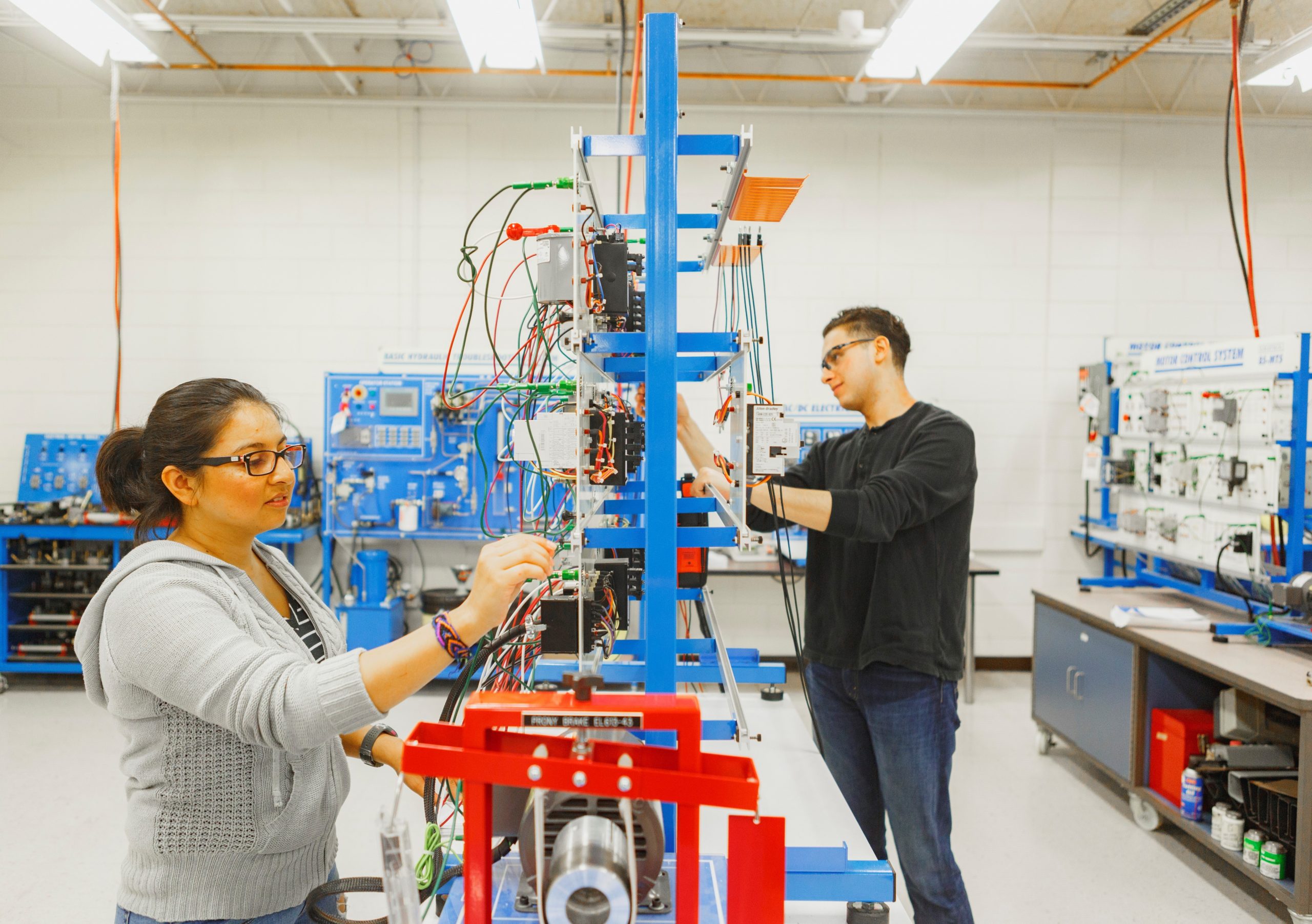
The results are in the data. Since implementing the model between 2009 and 2017, TSTC graduates, on average, experienced a 26% increase in starting wages, according to Bettersworth. He adds, the two-year graduation rates, over the same timeframe of 2009-2017, increased by 71%—from 17% to 29%.
For context, Bettersworth points out that 13% of community college students graduate in two years, according to the National Center for Education Statistics.
In Workforce Realigned, TSTC Chancellor Michael Reeser writes, “Academic programs have transformed into business units. We’ve built a culture of agile, data-driven analysis, and each business unit now tracks its performance in relation to our common objective using a real-time dashboard of key performance indicators.”
Reeser continues, “As intended, the new funding formula has transformed the operations of TSTC. For example, decision-making at every level is now driven by the primary question, ‘How can we put more Texans to work in great paying jobs?’”
Shared Responsibility and Shared Accountability
Six years ago, the Virginia Community College System (VCCS) set a goal. Triple the number of awarded credentials. While acquiring a credential tends to be less expensive than obtaining a degree, it is still financially out of reach for some. Currently, students are not able to use Pell Grant funds to pay for credential programs.
In the chapter about the VCCS program, Chancellor Glenn DuBois explains, “To create an affordable option for students, we tried something unprecedented: construct a system of shared responsibility and shared accountability that would bring together students, employers, the state, and VCCS—and give each one a financial stake in success.”
“While students always want to succeed, they are more likely to persist when they have a financial incentive to do so,” writes DuBois. To achieve its goal to increase the number of awarded credentials, VCCS launched the FastForward program in partnership with the state legislature.
The first third of the tuition is paid for by the student. The state pays portions of the remaining tuition as a student completes a course and, additionally, if the credential is earned.
Another component of the program, according to DuBois, “FastForward makes training providers’ revenue conditional upon both course completion and credential attainment.”
For those unable to foot the bill for the first third of the tuition, the college created another program. “We collaborated with the legislature to create a new pool of funds to launch the Financial Aid for Noncredit Training leading to Industry Credentials (FANTIC) program. This program funds the first third of tuition for adults who have a household income that is under 400% of the national federal poverty limit and who have a high school diploma but no postsecondary degree,” explains DuBois.
Workforce Realigned: How New Partnerships Are Advancing Economic Mobility
Jeffrey Kraus, VCCS assistant vice chancellor for strategic communications, tells WorkingNation that it’s time to rethink the definition of a college student.
“While there are plenty of fresh-faced, fresh-out-of-high-school 18-year-olds making their way to higher education, they represent an increasingly smaller portion of the people we serve. Our students work a job or three.” Kraus lists housing and food insecurity, car loans, consumer debt, and childcare costs among the pressures students face.
“Our career coaches now work individually with students before they select a credential program to help them maximize their odds of success,” further writes DuBois.
VCCS uses data on credential attainment and employment outcomes to help determine its offerings. “From identifying the need at the community level to approving the credentialing program at the state level, data is critical to ensuring that we are making the most out of this public investment. The policymakers who approve this funding demand results. They want to see the business owners in their districts finding the talent they need to succeed,” says Kraus.
“And the people who enroll in our programs need to know that there is a better career and a better paycheck at the end of the line to justify the time and the effort the programs demand,” adds Kraus.
“Pivoting to a new system represented substantial financial risk for VCCS. But those risks were the only pathway to meeting the need,” writes DuBois.
The completion rate for enrolled students is more than 90%, according to DuBois. “During the program’s first four years, FastForward participants earned more than 16,000 credentials.” More than 220 credentials are offered including in skilled trades, IT, health care and logistics.
Access to Opportunity
Accessing a career pathways education is not affordable for everyone. The book addresses this issue through its chapter on General Assembly (GA), a global education company that offers adults the skills needed to compete in the digital economy, which has a variety of ways for students to finance their learning.
General Assembly CEO Lisa Lewin and Tom Ogletree, the company’s vice president of social impact and external affairs, write, “To date, GA has secured public and private investment in scholarship programs that fully fund the cost of training for over 1,700 adults.”
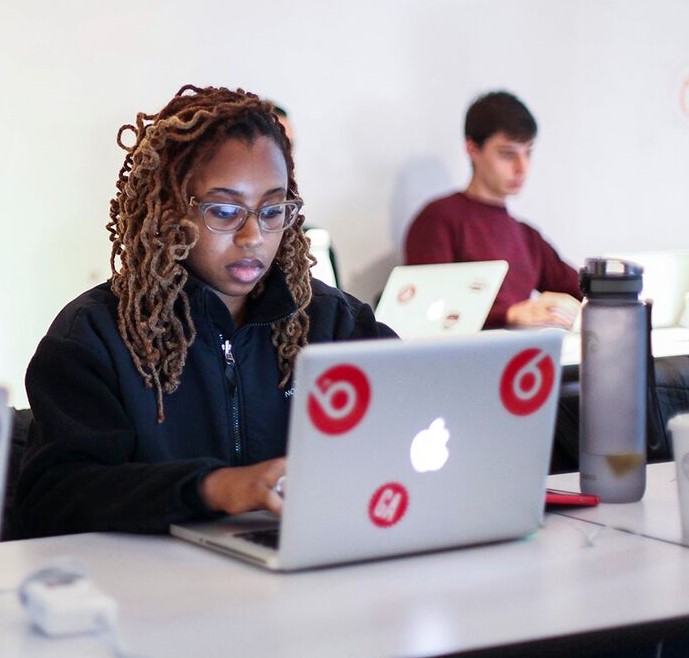
Three years ago, GA introduced Catalyst, an ISA (income share agreement) model. GA then took it a step further and created another avenue to an ISA. This option is intended for accepted students unable to take advantage of Catalyst due to “specific types of credit events, typically some combination of bankruptcies, defaults, and delinquencies.”
Lewin and Ogletree write, “The Career Impact Bond was designed to be accessible to (though not limited to) people who have had negative credit events in the past. Students are eligible for the Career Impact Bond if they:
- Are ineligible for other financing options at GA,
- Were eligible for public benefits in the two years before enrolling,
- Have a felony or misdemeanor charge on their record.”
Ogletree explains GA worked with Social Finance to determine which learners were to be the focus of the Career Impact Bond. “We knew from the start that we wanted to meet the needs of learners who had been admitted to General Assembly immersive programs – demonstrated readiness to be successful in the classroom and on the job search, but could not access other forms of financing due to past credit events.”
“We also wanted to be highly intentional about applying an access lens that was not solely focused on past credit score, and more broadly was designed to foster economic mobility for adults from communities that are often underserved and overlooked.”
Lewin and Ogletree write, “Financing alone does not ensure that students can consistently be successful in the program if they are navigating circumstances such as housing insecurity, prior (and current) financial obligations, or personal circumstances that might affect their ability to complete the program and commit to the job search.”
To address these “life” issues, Cheneyere Williamson, GA’s social impact program services lead, explains the importance of wraparound services. “2020, understandably, was a challenging year for many of our students when we think of their lives outside of the classroom, and all that they were attempting to manage.”
Services that were provided include information to access affordable health care insurance, navigating the unemployment insurance application process, paying childcare costs, and qualifying for eviction moratorium.
Despite the extreme difficulties resulting from the pandemic, Williamson says, “As of May 2021, 624 students have enrolled and participated in the software engineering or user experience design immersive programs at General Assembly, via the Career Impact Bond.”
“Right now, we are at the beginning of the evolution of the Career Impact Bond. What have we learned? The ability to pivot in real time has been integral to the program’s success to date,” write Lewin and Ogletree.
The Power of Partnerships
“I hope that the book will spark interest among stakeholders across the spectrum from government and policy makers, from employers, from schools and universities, and training institutions, from employers, to really rethink how they want to show up and partner,” says Palandjian.
“The meta theme is about partnerships, but authentic, real, deep partnerships that are multi-way. That are thoughtfully designed. The kind that shares risk and rewards. The kind that shares data and goals. These kinds of partnerships can be incredibly powerful to usher in the eco-equitable recovery that we’re all hoping for.”

The book’s national launch takes place on Thursday, June 3 from 12:30 to 2:00 p.m. (ET). Register here to hear a conversation with U.S. Secretary of Commerce Gina Raimondo, Ford Foundation president Darren Walker, and Bank of America chairman of the board and CEO Brian Moynihan moderated by Social Finance CEO Tracy Palandjian.
The virtual event will also include remarks from Atlanta Fed president and CEO Raphael Bostic, which is hosting the launch, as well as Philadelphia Fed president and CEO Patrick Harker and New York Times journalist Nicholas Kristof.
You can download Workforce Realigned: How New Partnerships Are Advancing Economic Mobility or request a copy here.

